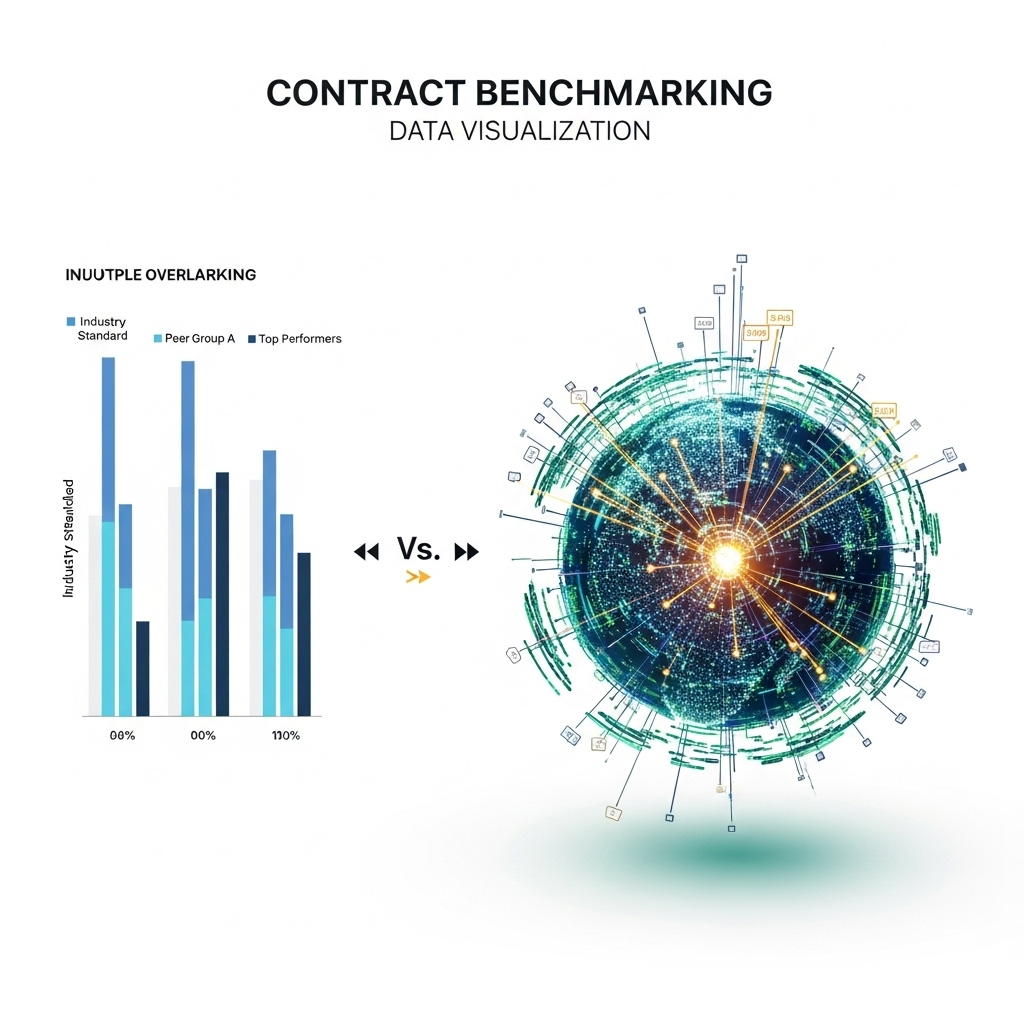Automated Clause Identification & Summarization
Transform how you navigate complex legal documents with AI-powered clause identification and plain-language summarization that makes contract review faster, more accurate, and accessible to all stakeholders.
Revolutionizing Contract Analysis with AI
In today's fast-paced business environment, legal professionals and business stakeholders are drowning in an ocean of contracts. From simple NDAs to complex multi-party agreements, the sheer volume and complexity of legal documents has reached unprecedented levels. Traditional contract review methods, which rely heavily on manual reading and analysis, are no longer sufficient to meet the demands of modern business operations.
Automated Clause Identification & Summarization represents a paradigm shift in how we approach contract analysis. By leveraging advanced Natural Language Processing (NLP) and machine learning technologies, this revolutionary approach transforms the contract review process from a time-intensive, error-prone manual task into a streamlined, accurate, and efficient automated workflow.
The technology behind automated clause identification goes far beyond simple keyword matching. It employs sophisticated AI models trained on millions of legal documents to understand the nuanced language of contracts, recognize clause patterns, and extract meaningful information with unprecedented accuracy. This deep understanding allows the system to identify not just what a clause says, but what it means in the context of the broader agreement.
Core Capabilities and Technologies
Advanced Natural Language Processing
At the heart of automated clause identification lies sophisticated NLP technology that has been specifically trained on legal language. Unlike general-purpose AI models, these specialized systems understand the unique characteristics of legal writing, including archaic terminology, complex sentence structures, and the precise meaning of legal phrases that might seem redundant or confusing to the untrained eye.
The AI models recognize that legal language follows specific patterns and conventions that have evolved over centuries of legal practice. For example, when the system encounters phrases like "whereas" or "notwithstanding anything to the contrary," it understands not just the literal meaning, but the legal significance and how these phrases relate to the overall structure and intent of the contract.
Comprehensive Clause Recognition
Modern automated systems can identify hundreds of different clause types with remarkable accuracy. From fundamental provisions like payment terms and termination clauses to specialized sections such as intellectual property assignments, force majeure provisions, and data processing addendums, the AI comprehensively categorizes every important element of a contract.
This comprehensive recognition extends beyond standard commercial contracts to specialized agreement types. Whether dealing with employment contracts, real estate transactions, software licensing agreements, or complex merger documents, the system adapts its analysis to the specific context and requirements of each document type.
Dynamic Table of Contents Generation
One of the most immediate benefits of automated clause identification is the generation of dynamic, clickable table of contents. Unlike static document outlines that may miss important provisions buried in lengthy paragraphs, AI-generated navigation maps provide comprehensive coverage of all identified clauses, regardless of where they appear in the document or how they are formatted.
Plain Language Transformation

Perhaps the most transformative aspect of modern clause identification systems is their ability to translate complex legal language into clear, accessible summaries. This capability bridges the communication gap between legal professionals and business stakeholders, enabling more informed decision-making across the organization.
Breaking Down Language Barriers
Legal documents are notorious for their use of archaic language, complex sentence structures, and technical terminology that can be intimidating and confusing to non-lawyers. Phrases like "party of the first part," "whereas," and "heretofore" create unnecessary barriers to understanding. Automated summarization cuts through this linguistic complexity to reveal the practical meaning and business implications of each clause.
The AI translation process goes beyond simple word substitution. It analyzes the complete context of each clause, considers its relationship to other parts of the contract, and generates summaries that capture both the literal meaning and the practical implications for the parties involved.
Contextual Understanding
Advanced summarization systems understand that the same legal phrase can have different meanings depending on the context in which it appears. For example, a "material adverse change" clause in a merger agreement carries different weight and implications than the same phrase in a simple service contract. The AI adjusts its analysis and summary accordingly.
This contextual awareness extends to understanding the relationships between different clauses within the same document. The system recognizes when clauses modify, limit, or enhance each other, and reflects these interdependencies in its summaries to provide a complete picture of rights and obligations.
Stakeholder-Specific Communication
Different stakeholders need different levels of detail and different types of information from contract summaries. Sales teams need to understand pricing and delivery terms, while IT departments focus on data security and system integration requirements. Advanced summarization systems can tailor their output to the specific needs and knowledge levels of different audience groups.
Intelligent Concept Search

Traditional document search tools rely on exact keyword matches, which often fail to locate relevant information when legal concepts are expressed using different terminology. Intelligent concept search represents a quantum leap forward in contract analysis capability, enabling users to find relevant provisions regardless of the specific words used to express them.
Semantic Understanding
Semantic search technology understands that legal concepts can be expressed in numerous ways. When searching for "force majeure" provisions, the system doesn't just look for that exact phrase. Instead, it searches for concepts related to unforeseeable events, acts of God, circumstances beyond reasonable control, and other expressions that convey the same legal meaning.
This semantic understanding extends to synonyms, related terms, and even implied concepts. A search for "termination" might also surface clauses dealing with expiration, cancellation, dissolution, or breach scenarios that effectively end the contractual relationship.
Cross-Reference Analysis
Intelligent search systems don't just find individual clauses; they understand the relationships between different parts of a contract. When analyzing termination provisions, for example, the system automatically identifies related clauses covering notice requirements, cure periods, return of property, and post-termination obligations.
This cross-referencing capability is particularly valuable in complex agreements where rights and obligations are scattered throughout the document and interconnected in subtle ways. The AI creates a comprehensive map of these relationships, ensuring that users understand not just individual provisions but how they work together as part of the overall contractual framework.
Historical and Comparative Analysis
Advanced systems can compare current contract provisions against historical versions, industry standards, and template libraries to identify deviations, improvements, or potential issues. This comparative analysis helps legal professionals understand how their agreements stack up against best practices and market norms.
Business Impact and ROI
Dramatic Time Savings
Organizations implementing automated clause identification and summarization typically see 60-80% reductions in initial contract review time. What once took hours or days can now be accomplished in minutes, freeing legal professionals to focus on high-value strategic work rather than routine document analysis.
These time savings compound across the organization. When business stakeholders can quickly understand contract terms without waiting for legal interpretation, decision-making accelerates, deal cycles shorten, and opportunities are captured more rapidly.
Improved Accuracy and Consistency
Human contract reviewers, no matter how experienced, are subject to fatigue, distraction, and oversight. Automated systems provide consistent, thorough analysis of every document, reducing the risk of missing critical provisions or misinterpreting important terms.
This consistency is particularly valuable in high-volume environments where multiple reviewers might interpret similar clauses differently. Automated analysis ensures that the same standards and criteria are applied uniformly across all contracts.
Enhanced Collaboration
By providing plain-language summaries and intuitive navigation tools, automated clause identification breaks down silos between legal and business teams. Sales professionals can understand pricing and delivery terms, procurement managers can evaluate supplier obligations, and executives can quickly grasp the key elements of major agreements without requiring extensive legal interpretation.
Future Developments and Trends
The field of automated clause identification and summarization continues to evolve rapidly. Emerging developments include enhanced multilingual capabilities, industry-specific customization, and integration with broader contract lifecycle management systems.
Artificial intelligence models are becoming increasingly sophisticated in their understanding of legal nuance and context. Future systems will likely offer even more precise analysis, better handling of ambiguous language, and improved ability to identify potential conflicts or gaps in contractual provisions.
Integration with other AI technologies, such as predictive analytics and automated negotiation support, promises to create comprehensive contract intelligence platforms that not only analyze existing agreements but help optimize future negotiations and contract terms.
